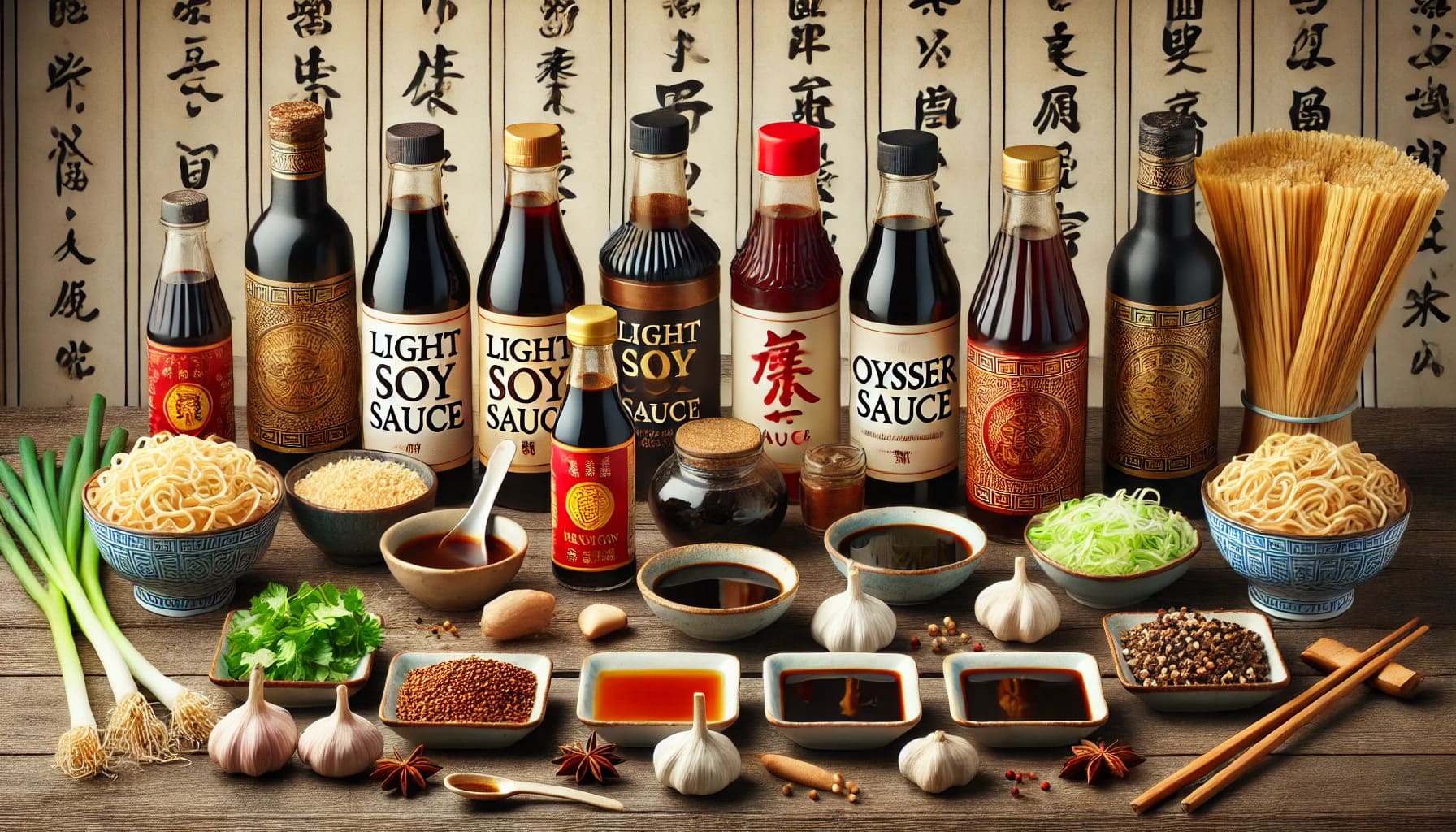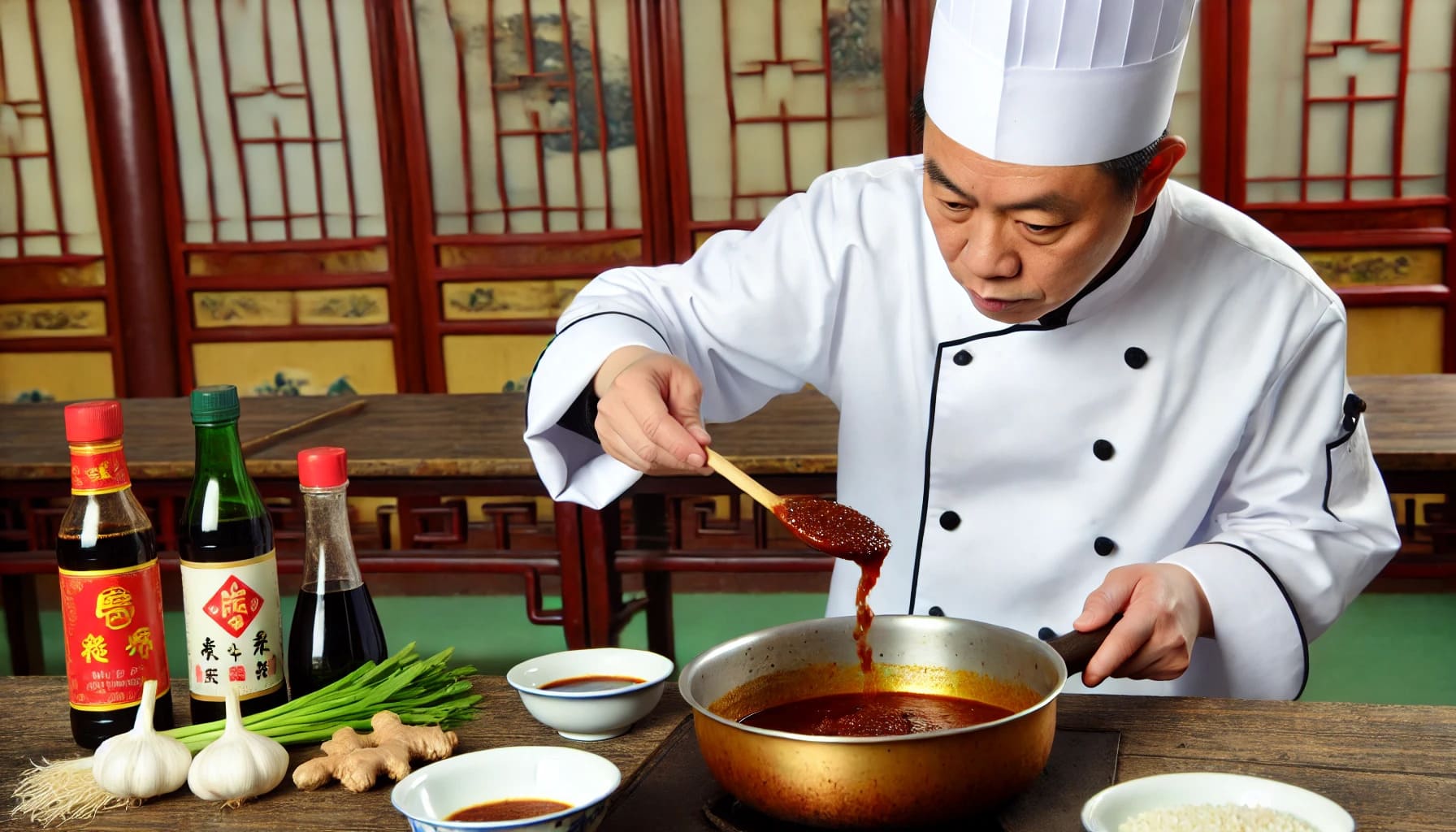Chinese Noodle: Discover What is the Main Sauce
What is the Main Sauce in Chinese Food?
When it comes to "Chinese cuisine," many people mistakenly believe there is one "main sauce" that defines all Chinese dishes. However, the truth is far more complex and fascinating. China's culinary landscape is incredibly diverse, with each region offering its own unique flavors and ingredients. The concept of a single "main sauce" oversimplifies the rich tapestry of Chinese cooking.
In reality, the importance of various sauces in Chinese cuisine cannot be understated. Each region, and often each dish, has its own preferred sauces and flavor profiles. From the light soy sauce used in delicate stir-fries to the robust dark soy sauce in braised dishes, the variety is vast. Some of the most popular sauces include light soy sauce, dark soy sauce, oyster sauce, and hoisin sauce. Let's delve into the world of these essential sauces.
If you're looking to experience these flavors firsthand, come visit The Magic Noodle (https://themagicnoodle.net/), where our menu showcases the best of authentic Chinese noodle dishes. You can refer to the menu here: https://themagicnoodle.net/menu
Essential Sauces for Chinese Cooking
Light Soy Sauce
Light soy sauce is a staple in Chinese kitchens. Its thin consistency and salty flavor make it perfect for seasoning and enhancing the natural taste of ingredients. Commonly used in stir-fries, marinades, and as a dipping sauce, light soy sauce is a versatile ingredient that adds a delicate umami flavor to dishes.
Dark Soy Sauce
Dark soy sauce is richer and less salty than light soy sauce. It has a thicker consistency and a slightly sweet taste, making it ideal for adding color and depth to dishes. Often used in braised recipes and stews, dark soy sauce imparts a beautiful caramel hue and a deeper flavor profile.
Oyster Sauce
Oyster sauce is another essential condiment in Chinese cooking. Made from oyster extracts, this sauce is thick, rich, and slightly sweet. It's commonly used in stir-fries and as a glaze for meats and vegetables, adding a savory umami boost that enhances the overall flavor of the dish.
Hoisin Sauce
While not as universally used as soy sauces, hoisin sauce is a popular condiment in Chinese cuisine. Its sweet and savory flavor, along with its thick texture, makes it perfect for glazing, dipping, and adding complexity to sauces and marinades.
Exploring Regional Sauce Specialties
China's vast geography and rich cultural history have led to the development of unique regional cuisines, each with its own signature sauces and flavor profiles. Let's explore some of these regional specialties.
Sichuan Cuisine: Chili Bean Paste
In Sichuan cuisine, chili bean paste (doubanjiang) is a fundamental ingredient. Known for its fiery flavors, Sichuan dishes often feature this spicy, salty, and umami-rich paste. It's made from fermented broad beans and chili peppers, giving dishes a distinctive heat and depth.
Cantonese Cuisine: Sha Cha Sauce
Cantonese cuisine is known for its subtle and balanced flavors. Sha Cha sauce, also known as Chinese barbecue sauce, is a popular condiment in this region. Made from soybeans, garlic, shallots, and spices, it is often used in seafood dishes, adding a savory and slightly sweet taste.
The Art of Combining Sauces in Chinese Cooking
One of the hallmarks of Chinese cuisine is the art of combining different sauces to create complex and harmonious flavors. The careful balance of salty, sweet, sour, and umami elements is what makes Chinese dishes so delicious and satisfying.
For example, in many stir-fries, a combination of light soy sauce, dark soy sauce, oyster sauce, and a touch of sugar creates a balanced and flavorful sauce that coats the ingredients beautifully. In noodle soups, a mix of soy sauce, hoisin sauce, and a splash of vinegar can elevate the broth, adding depth and complexity.
Beyond Sauces: Other Flavor Builders in Chinese Cuisine
While sauces play a crucial role in Chinese cooking, other ingredients are equally important in building the rich and diverse flavors of Chinese dishes.
Fresh Aromatics
Fresh aromatics like ginger, garlic, and scallions are essential in Chinese cuisine. These ingredients are often used as a base for many dishes, providing a fragrant and flavorful foundation.
Vinegars and Shaoxing Wine
Chinese vinegars, such as black vinegar and rice vinegar, add acidity and brightness to dishes. Shaoxing wine, a type of Chinese rice wine, is commonly used in marinades and sauces to enhance flavor and tenderize meat.
Spices and Chili Oil
Spices such as star anise, Sichuan peppercorns, and cloves are frequently used to add warmth and depth to dishes. Chili oil, made from dried chili peppers and oil, is a popular condiment that adds heat and complexity to many dishes.
In conclusion, the richness of "Chinese cuisine" lies in its diversity and the skillful use of a variety of sauces and flavoring ingredients. By understanding and appreciating the unique characteristics of these sauces and how they are used across different regions, we can gain a deeper appreciation for the art of Chinese cooking. Whether you're a seasoned cook or a curious food lover, exploring the world of Chinese sauces is a delicious and rewarding journey.
RESTAURANT LOCATIONS
-
 2488 Channing Way Berkeley, CA 94704 Hotline: (510) 845-3766
2488 Channing Way Berkeley, CA 94704 Hotline: (510) 845-3766








